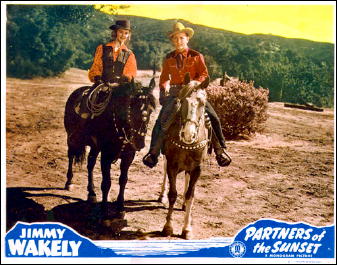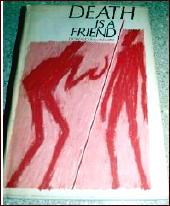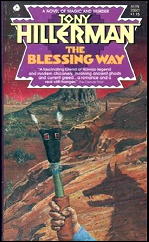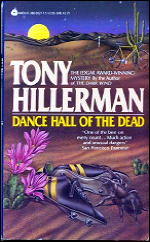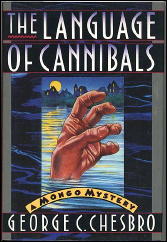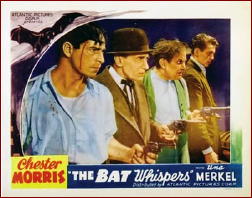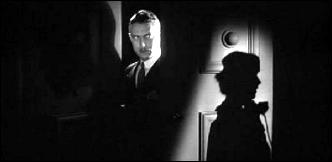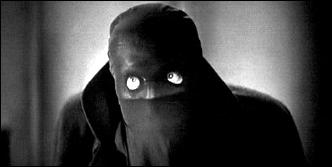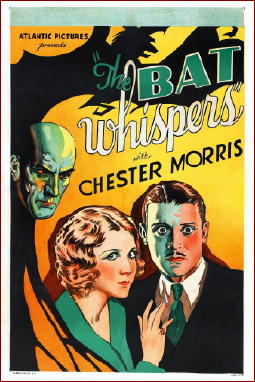Fri 2 Mar 2012
Western Movie Review: PARTNERS OF THE SUNSET (1948).
Posted by Steve under Reviews , Western movies[5] Comments
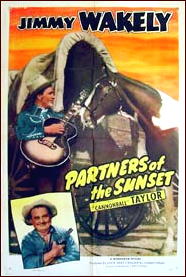
PARTNERS OF THE SUNSET. Monogram, 1948. Jimmy Wakely, Cannonball Taylor, Christine Larson, Steve Darrell, Marshall Reed, Jay Kirby, Leonard Penn, J.C. Lytton. Screenplay: J. Benton Cheney. Director: Lambert Hillyer.
Just so that we’re squared away with this right from the start, the title of this movie is purely generic. It has nothing to do with the story line at all.
And for a movie that’s only 53 minutes long — and that includes five songs — it’s as full of as much villainous treachery, all-around bad-guy-ism and men on horses running here and there as any aficionado of the good old-fashioned B-Western could possibly want.
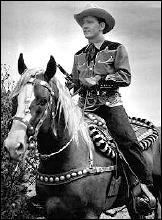
Plus the comedy antics of Cannonball Taylor, not usually one of my favorite sidekicks, but he makes good use of a fishing pole on several goofy but well-timed occasions in Partners of the Sunset.
What more could you want? As an actor, Jimmy Wakely was an awfully good singer, and when the singing cowboy began to disappear from the big screen in the 1950s, so did his movie career. Not that he probably noticed very much. As I say, he was maybe the best singer of all the singing B-Western cowboys, and he’s in good form here.
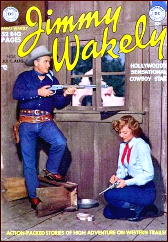
He plays the foreman of a horse ranch in this movie, and working under budget constraints, Cannonball Taylor seems to have been the only ranch hand. The story begins in earnest when the owner of the ranch comes home with a new bride perhaps half his age, played by the beautiful Christine Larson. The ranch owner’s son (Jay Kirby) expresses a different opinion of the lady and is forcefully kicked off the ranch.
Complications begin to mount precipitously from there, but it turns out the son is right. The lady may be beautiful, but she’s certainly no lady. She’d not even be out of place in a tough guy crime drama. Except for Cannonball talking too much out of turn, Jimmy Wakely’s plan may have…
But watch the movie. It’s no High Noon, but even the kids at the Saturday matinee may have realized this particular entry in the Wakely resume may have been one of his better ones.
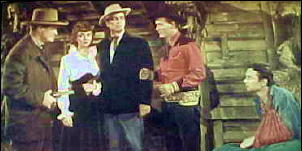
(A small caveat, or Truth in Advertising: I haven’t watched them all, only this one and one other, which was fairly dull and uninteresting and will not be mentioned further.)
As for screenwriter J. Benton Cheney, I don’t know much about him, but in 1948 alone, he wrote 12 small epics just like this one, presumably all for Monogram. By 1950, however, he was out of the business until TV really came along.
Director Lambert Hillyer was equally busy in 1948; by my count he was at the helm of 11 western dramas, also presumably all for Monogram. But once again, after six more films in 1949, that was it for him until 1953. He had a short career in TV from then on, known most perhaps for directing 39 episodes of The Cisco Kid between 1953 and 1956.
